- Brian
- September 15, 2023
- 6:19 am

FiberMall
Answered on 6:19 am
Active Copper Breakout Cables are cables that connect a single high-speed port to multiple lower-speed ports. They are typically used to connect switches, servers, and storage devices in data centers. They use copper wires to transmit electrical signals and have active components in the connectors that boost the signal quality and extend the reach. They can support data rates from 10G to 400G per lane.
The QSFP end of the active breakout cable includes a gearbox chip which converts 2x 50G PAM-4 electrical signals from the 400G port (a 100G-2 interface) into 4x 25G NRZ electrical signals (a 100G-4 interface). The vast majority of the installed base of 100G QSFP switches / routers / NICs use 100G-4 QSFP ports (where the QSFP port has an electrical interface consisting of 4x 25G NRZ electrical signals).
The Arista active copper breakout cables offer a cost-effective way to breakout a 400G port into 4x100G and connect to an installed base of 100G QSFP ports.
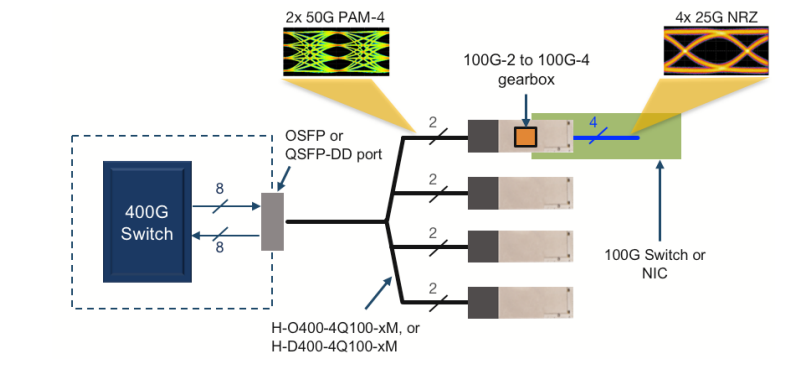
People Also Ask
How is the Thermal Structure of OSFP Optical Modules Designed?
The power consumption of ultra-high-speed optical modules with 400G OSFP and higher rates has significantly increased, making thermal management a critical challenge. For OSFP package type optical modules, the protocol explicitly specifies the impedance range of the heat sink fins. Specifically, when the cooling gas wind pressure does not exceed
AI Compute Clusters: Powering the Future
In recent years, the global rise of artificial intelligence (AI) has captured widespread attention across society. A common point of discussion surrounding AI is the concept of compute clusters—one of the three foundational pillars of AI, alongside algorithms and data. These compute clusters serve as the primary source of computational
Data Center Switches: Current Landscape and Future Trends
As artificial intelligence (AI) drives exponential growth in data volumes and model complexity, distributed computing leverages interconnected nodes to accelerate training processes. Data center switches play a pivotal role in ensuring timely message delivery across nodes, particularly in large-scale data centers where tail latency is critical for handling competitive workloads.
Comprehensive Guide to 100G BIDI QSFP28 Simplex LC SMF Transceivers
The demand for high-speed, cost-effective, and fiber-efficient optical transceivers has surged with the growth of data centers, telecommunications, and 5G networks. The 100G BIDI QSFP28 (Bidirectional Quad Small Form-Factor Pluggable 28) transceiver is a standout solution, enabling 100 Gigabit Ethernet (100GbE) over a single-mode fiber (SMF) with a simplex LC
NVIDIA SN5600: The Ultimate Ethernet Switch for AI and Cloud Data Centers
The NVIDIA SN5600 is a cutting-edge, high-performance Ethernet switch designed to meet the demanding needs of modern data centers, particularly those focused on artificial intelligence (AI), high-performance computing (HPC), and cloud-scale infrastructure. As part of NVIDIA’s Spectrum-4 series, the SN5600 delivers unparalleled throughput, low latency, and advanced networking features, making
How Ethernet Outpaces InfiniBand in AI Networking
Ethernet Challenges InfiniBand’s Dominance InfiniBand dominated high-performance networking in the early days of generative AI due to its superior speed and low latency. However, Ethernet has made significant strides, leveraging cost efficiency, scalability, and continuous technological advancements to close the gap with InfiniBand networking. Industry giants like Amazon, Google, Oracle,
Related Articles

800G SR8 and 400G SR4 Optical Transceiver Modules Compatibility and Interconnection Test Report
Version Change Log Writer V0 Sample Test Cassie Test Purpose Test Objects:800G OSFP SR8/400G OSFP SR4/400G Q112 SR4. By conducting corresponding tests, the test parameters meet the relevant industry standards, and the test modules can be normally used for Nvidia (Mellanox) MQM9790 switch, Nvidia (Mellanox) ConnectX-7 network card and Nvidia (Mellanox) BlueField-3, laying a foundation for
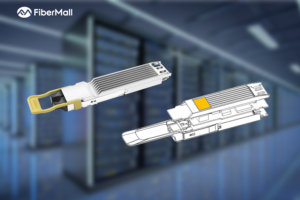
How is the Thermal Structure of OSFP Optical Modules Designed?
The power consumption of ultra-high-speed optical modules with 400G OSFP and higher rates has significantly increased, making thermal management a critical challenge. For OSFP package type optical modules, the protocol explicitly specifies the impedance range of the heat sink fins. Specifically, when the cooling gas wind pressure does not exceed
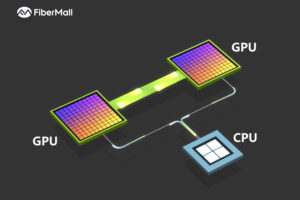
AI Compute Clusters: Powering the Future
In recent years, the global rise of artificial intelligence (AI) has captured widespread attention across society. A common point of discussion surrounding AI is the concept of compute clusters—one of the three foundational pillars of AI, alongside algorithms and data. These compute clusters serve as the primary source of computational
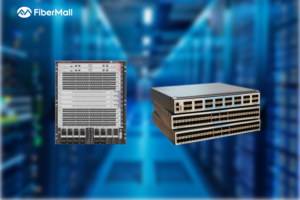
Data Center Switches: Current Landscape and Future Trends
As artificial intelligence (AI) drives exponential growth in data volumes and model complexity, distributed computing leverages interconnected nodes to accelerate training processes. Data center switches play a pivotal role in ensuring timely message delivery across nodes, particularly in large-scale data centers where tail latency is critical for handling competitive workloads.
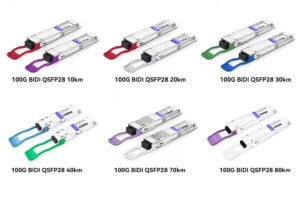
Comprehensive Guide to 100G BIDI QSFP28 Simplex LC SMF Transceivers
The demand for high-speed, cost-effective, and fiber-efficient optical transceivers has surged with the growth of data centers, telecommunications, and 5G networks. The 100G BIDI QSFP28 (Bidirectional Quad Small Form-Factor Pluggable 28) transceiver is a standout solution, enabling 100 Gigabit Ethernet (100GbE) over a single-mode fiber (SMF) with a simplex LC
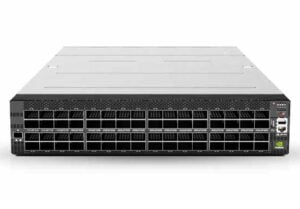
NVIDIA SN5600: The Ultimate Ethernet Switch for AI and Cloud Data Centers
The NVIDIA SN5600 is a cutting-edge, high-performance Ethernet switch designed to meet the demanding needs of modern data centers, particularly those focused on artificial intelligence (AI), high-performance computing (HPC), and cloud-scale infrastructure. As part of NVIDIA’s Spectrum-4 series, the SN5600 delivers unparalleled throughput, low latency, and advanced networking features, making
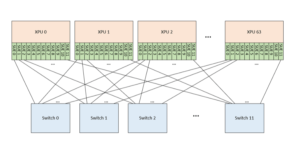
How Ethernet Outpaces InfiniBand in AI Networking
Ethernet Challenges InfiniBand’s Dominance InfiniBand dominated high-performance networking in the early days of generative AI due to its superior speed and low latency. However, Ethernet has made significant strides, leveraging cost efficiency, scalability, and continuous technological advancements to close the gap with InfiniBand networking. Industry giants like Amazon, Google, Oracle,
Related posts:
- Is UFM as Functional as Managed Switch and Unmanaged Switch?
- What FEC is Required When the 400G-BIDI is Configured for Each of the Three Operating Modes?
- What Type of Optical Connectors do the 400G-FR4/LR4, 400G-DR4/XDR4/PLR4, 400G-BIDI (400G SRBD), 400G-SR8 and 400G-2FR4 Transceivers Use?
- Both the 100G-SWDM4 and the 100G-SRBD Transceivers Support 100G over Duplex Multi-Mode Fiber. When Should Each Transceiver Be Used?
